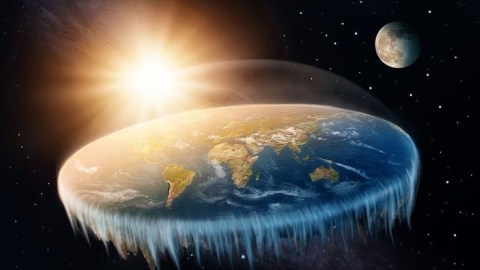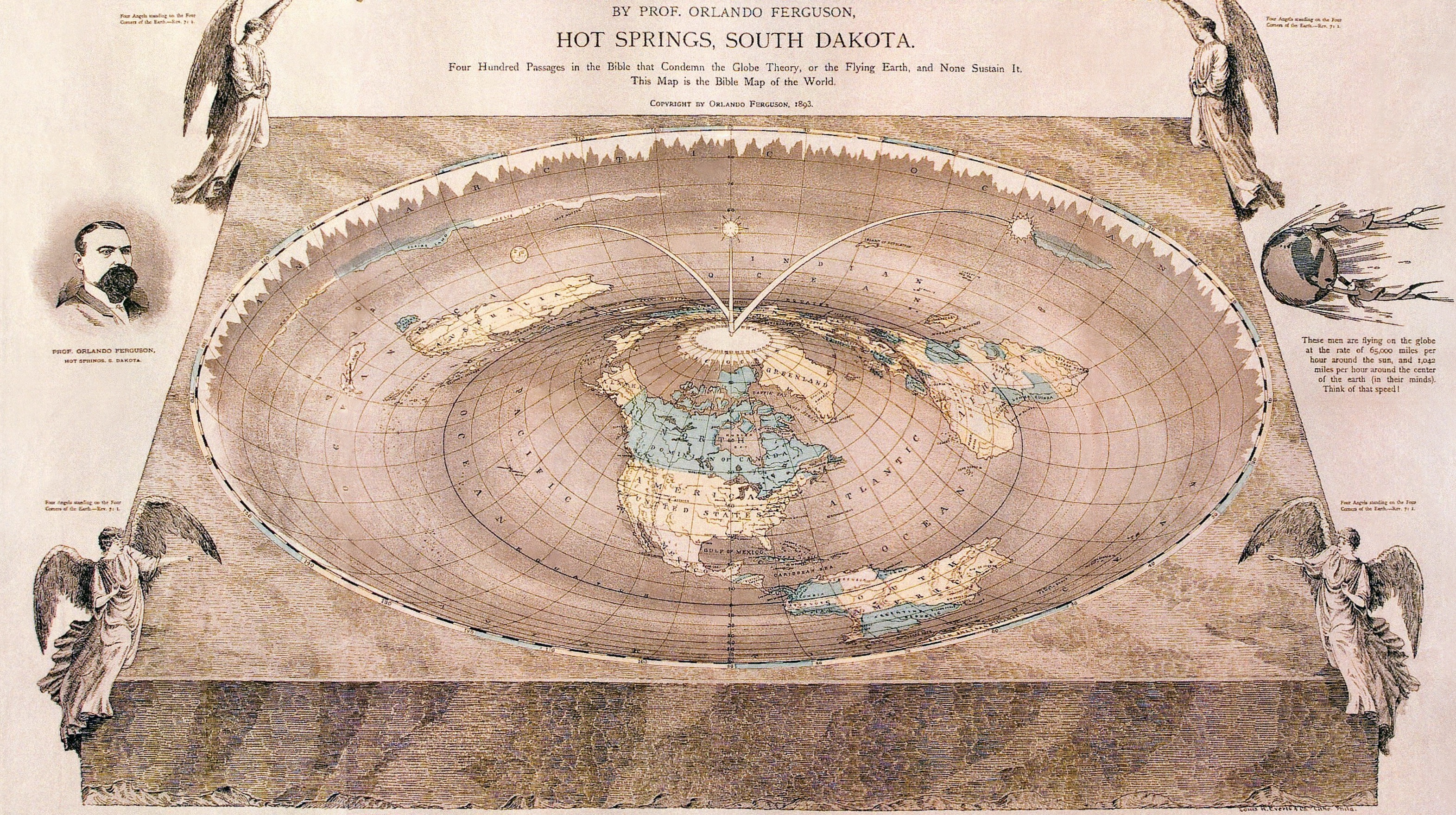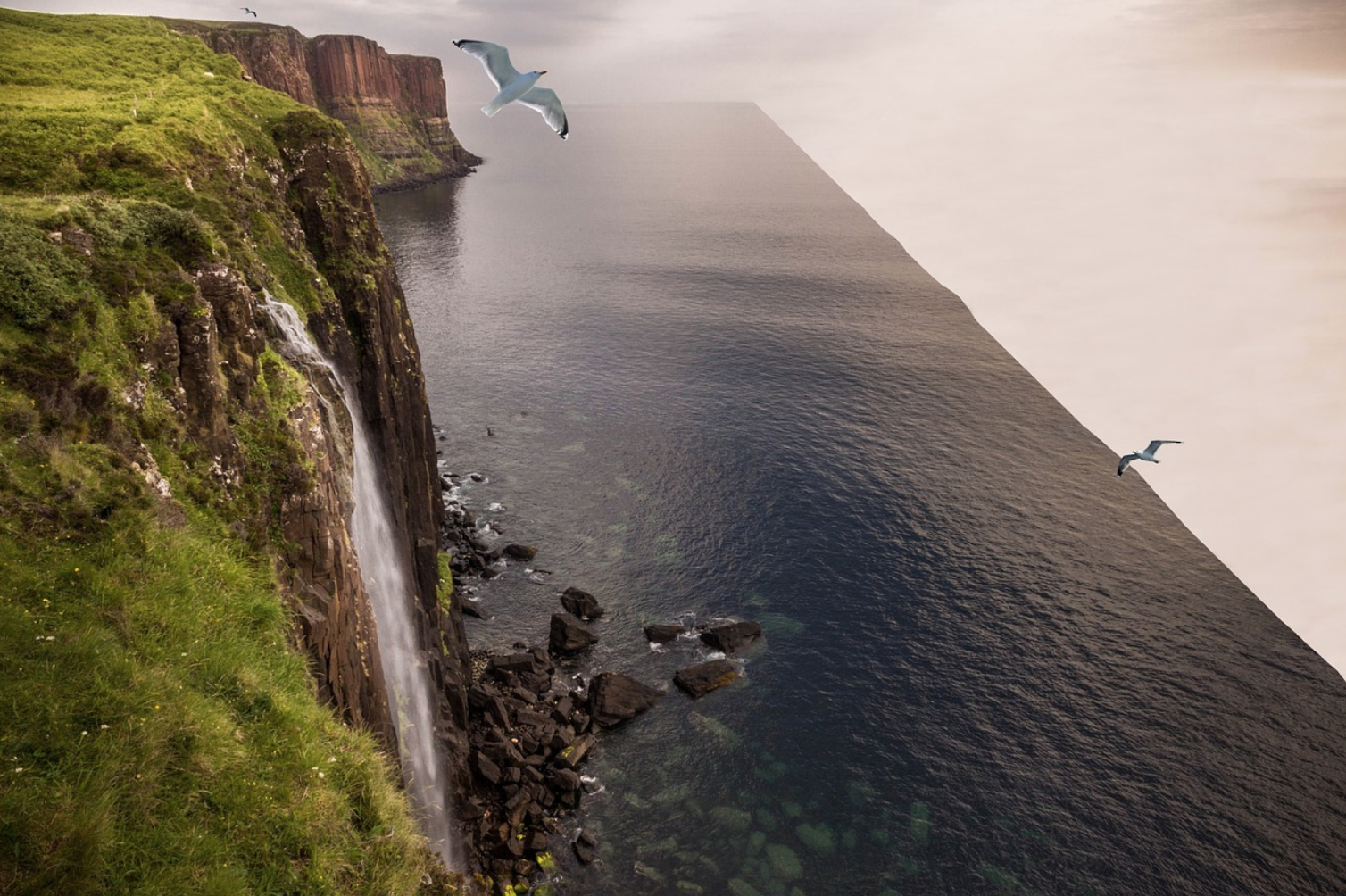Reality show idea: Make Flat-Earthers search for the world’s edge

- According to Flat-Earthers, our planet is flat and space travel doesn’t happen.
- People are calling for a reality show about Flat-Earthers.
- Flat-Earthers say a 150-foot ice wall surrounds the world.
Amidst all the fake news, misinformation sponsored by governments, and the explosion of conspiracy theories that bombard us daily, it’s no surprise that there seems to be a growing number of Flat-Earthers. After all, once you start doubting reality and the solidity of the institutions around you, being unsure whether the Earth is flat or round seems almost warranted. This said, there is a strong demand (at least online) for a reality show about Flat-Earthers searching for the edge of the world.
Ah. And what else could better signify our times?
Your basic flat earth belief kit often stems from biblical references, such as one, apparently, that mentions a giant tree that’s supposedly visible from all corners of the Earth — at its “farthest bounds.” If the planet was spherical this would not be possible while a flat Earth allows for such a scenario. Other beliefs that go along with this include claiming that gravity isn’t real and that a Game of Thrones-like wall of ice surrounds the rim of the disc-like Earth. This wall is Antarctica while the Arctic Circle is the disc’s center. If you went over the wall, you would fall into outer space or end up on an infinite plane. But, as the Flat Earth Society site admits, “To our knowledge, no one has been very far past the ice wall and returned to tell of their journey.”
Notably, according to the Flat-Earthers, the 150-foot-tall wall is guarded by NASA. The agency’s real mission is to keep the truth away from regular citizens while being an embezzlement front and faking space travel.
Although these beliefs are certainly not supported by the ample evidence to the contrary, provided by people who have experienced the planet’s curvature from above — or those who have been to Antarctica — the number of Flat-Earthers is likely to grow. According to a 2018 survey, about a third of millennials are willing to entertain doubts about the Earth being round. Not all of these believe in the planet being flat, but it’s easy to envision their ranks expanding, as such memes tend to acquire new converts by their sheer scope and intellectual frivolity. One clear catalyst for the resurgence of this idea has certainly been the Internet.
 An animation of the day/night cycle according to Flat Earth Theory over the course of 24 hours.
An animation of the day/night cycle according to Flat Earth Theory over the course of 24 hours.
Credit: Flat Earth Society.
The net, in its infinite wisdom, keeps a strong meme alive. So it is in this case, as the desire to watch a reality show about Flat-Earthers searching for the edge of the world keeps popping up on popular Reddit threads time and time again, causing tends of thousands of upvotes and comments. Of course, the impetus behind this show stems, for many, from the hope Flat-Earthers will fail spectacularly.
One such thread proposes that it would be “funny” to “give them access to a helicopter, boats, transportation, and flights to try and find the end of the world.” And then, suggests user “Pilotavery,” the contestants or “Flerfers” should be made to tell the organizers where they plan to go. The poster thinks this would dampen their enthusiasm, adding “I wonder how long it will take before they give up?” On the other hand, the poster thinks it would be “funny to see how frustrated they get.”
We should fund a reality TV show, funding/following flat earthers in the search for the end of the earth. from r/flatearth
Another idea is to have a voting component to the show, with “the most trustworthy” Flat-Earthers being sent to the International Space Station to see the truth for themselves.
While it’s certainly amusing, there is clearly a danger of such a show being set up to make the contestants look ridiculous, especially if you believe that they will not find the edge of the world. The upside for Flat-Earthers could be an opportunity to share their beliefs to millions via television, all the while trying to prove their theory right. Maybe they can make everyone else looks silly by actually finding a wall of ice at the end of the world. Wouldn’t you want to watch that to find out?
In any case, no such show exists at the moment. But, Hollywood, if you’re reading this, the internet wants what the internet wants. Make it happen.





